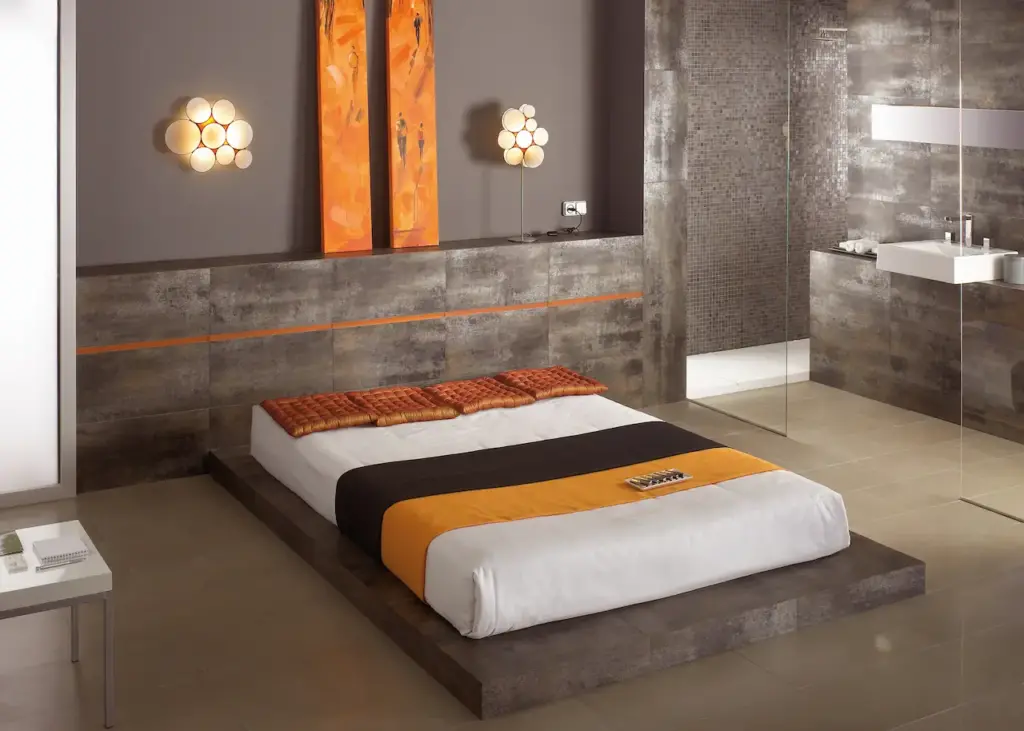Soundproof Your Bedroom
Soundproof Your Bedroom: 13 Tips for Enjoying a Noise-Free Sleep
A comprehensive guide to all the steps that you can take in order to soundproof your home.
Loud noises are annoying during the day, but they can be particularly disruptive when you’re trying to sleep. Many people are affected by noisy neighbours, walls or street noise that enters their rooms and disrupts sleep.
But there’s no reason to worry. You can control and reduce the sound by taking simple measures.

What is Soundproofing First?
Soundproofing is a process that reduces noise levels and noise in a room. Soundproofing works by creating airtight seals that prevent noise from entering a space through windows, doors or walls. Airflow is blocked at the source of noise, so there will be no sound. Sound can be reduced by dampening the sound, in addition to creating a seal. It is possible to do this by adding furniture or using fluffy materials like foam.
When you first analyse a room to determine if it needs soundproofing, the first thing to do is note any gaps, cracks or holes that could be letting sound in. These can be found under and around doors, windows, vents and corners. It is possible to use acoustic quilt and foam to line windows and walls, but it can be expensive. The average person might not need this.
Here’s a list of cheaper DIY options.
Soundproofing Your Bedroom Is Easy and Effective.
1) Line the frame of the door with “door socks”, “draft stops” or weather strips.
Installing the draft stopper is a permanent solution. weatherstrips can be used around the edge of your door to create a tight seal for soundproofing.
You can also hang clothes, towels, jackets or other items on the backside of the door with hooks to absorb and block noise.
2) Seal any cracks or gaps on the frame of your window or door with acoustic sealant.
You may want to check any caulking that is already in place to make sure all cracks are sealed.
3) Hang heavy blankets, or towels, on the walls and doors.
If you prefer to DIY, you could make your acoustic panel from old towels and hang it on the wall. Make a wooden frame, and then staple the towel you want to use across the front of the frame. You can also staple it around the edges. Stitch the towels together at the centre to prevent them from sagging. The finished frame can be hung up and looks much better than acoustic foam for a fraction of its cost.
Even some noise-cancelling tests show that towels are more effective than professional-grade acoustic flannel.
4) Use a heavy drape on the window.
Online, you can also buy curtains that are designed to be soundproof. You can silence a noisy neighbour who mows the lawn early at the weekend. Close the curtain while sleeping to block out noise and open it when awake to listen to the world.

5) Use clear window insulation sheets, safety sheets, or glazing films to cover the window.
Soundproofing your windows will benefit from any additional layer. Glass is a thin, transparent material that allows sound to pass through. For insulation, clear window insulation is often used. They are used primarily for thermal insulation but they can also be used to soundproof a room for a little boost.
You can use safety sheets or glazed sheets to frost your windows if you do not want them to look like insulation film all year. These sheets are usually found in bathrooms. These will make your window more soundproof by adding an additional layer.
6) Place a heavy carpet or rug on the floor.
Hard floors like hardwood or tiles can increase sound reverberation in a room. These floors increase the sound of everything. Hard flooring can make a space sound echoey, whether it is booming voices or loud steps. Cover them with a heavy, fluffy rug to reduce echoes. They’ll also make your room cozier and easier to clean.
7) Replace your hollow door with a solid one if it is hollow.
Consider combining some of our other door tips if you have a hollowed-out door and don’t want to spend money on a solid door. Installing weather stripping and a draft stopper as well as covering the side of your door with fabric or towel will reduce noise on a budget.
8) Decorate your walls with tapestries, pictures, and canvas paintings
9) You can add furniture to the room, such as a bookcase or soft upholstery.
The bed is another great piece of furniture that absorbs sound. A soundproofed room will benefit from an upholstered headboard and a fluffy blanket.
10) Attach acoustic panels to the wall.
11) Use an air purifier or a white noise generator.
White noise machines are a great solution if you don’t want to change the furniture in your room or hang things on the walls. White noise machines are designed to cancel out any other noises, allowing you to sleep peacefully.
You can use our buyer’s guide to find the perfect white noise machine for you. You can also purchase an air purifier which purifies your air and emits a white-noise sound.

12) Soundproof paint and wallpaper are two options to consider.
13) If you’ve tried everything else and nothing works, try earplugs.
You can find comprehensive guides on the best earplugs to sleep with as well as the best sleep headphones for a peaceful sleep.
Final thoughts
The noise cancelling tips above are suitable for a wide range of budgets. You can mix and match the tips until you find one that suits your needs. It may take some time to create a soundproof room.
Once you find what works, you’ll be able to enjoy a peaceful sleep without any outside noise!
